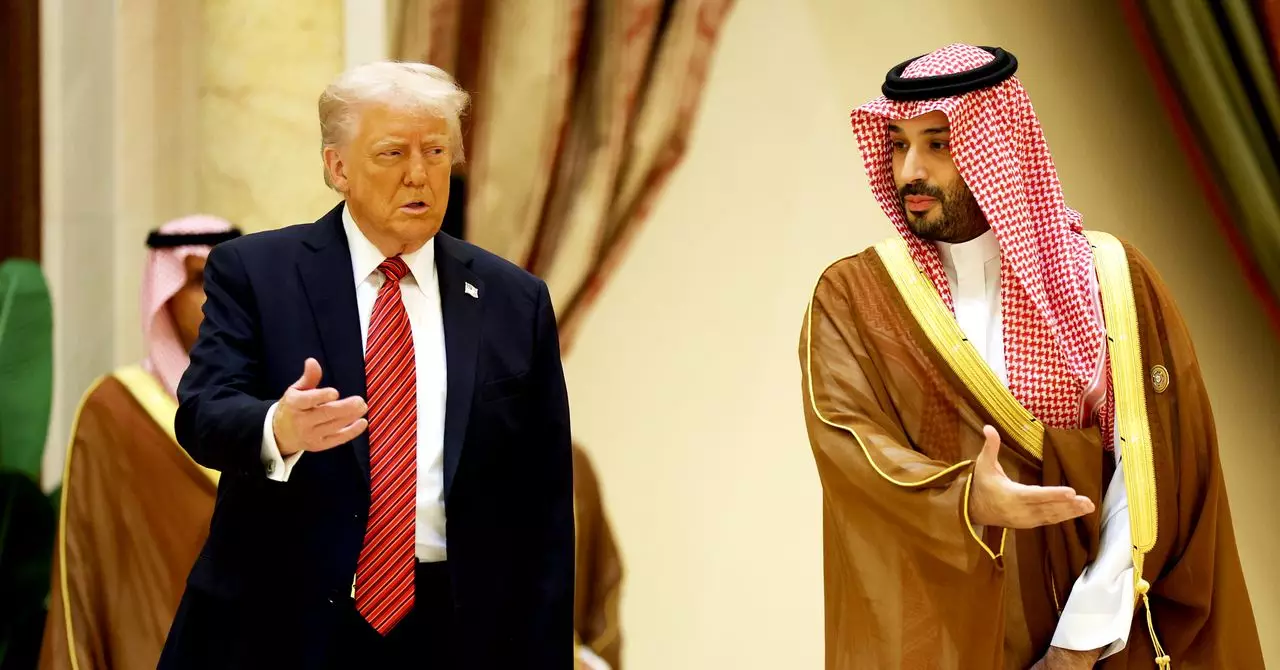The recent whirlwind tour of the Middle East by former President Donald Trump has reshaped conversations around global technology investments, particularly in artificial intelligence (AI). Accompanied by a cadre of influential tech billionaires, Trump’s expedition was not merely ceremonial; it marked a significant pivot toward enhanced cooperation between the U.S. and Gulf nations. The engagements between the U.S. and the United Arab Emirates (UAE) and Saudi Arabia indicate a strategic endeavor to cement America’s leadership in AI while cultivating lucrative partnerships with these wealthy nations. As such, the implications are profound, reverberating through economic, political, and technological spheres.
The agreement struck in Abu Dhabi illustrates this new partnership. Trump announced plans involving unspecified U.S. firms collaborating with Emirati company G42 to construct the largest AI data center cluster outside the United States. This effort will produce an astounding five gigawatts of AI computing capacity, a monumental leap forward in the technological capabilities of the UAE. Sheikh Tahnoon bin Zayed Al Nahyan’s assertion that this investment will transform the UAE into a research hub reflects an intentional ambition to not only advance the national interest but also position the region as a global player in AI development.
AI as a Catalyst for Economic Diversification
For Saudi Arabia and the UAE, the shift towards AI is not merely an upgrade in technological infrastructure; it represents a bold strategy to diversify their economies away from oil dependence. Both nations, buoyed by wealth amassed from fossil fuels, are now leveraging their financial resources to invest in high-tech industries, creating a ripple effect across sectors. The establishment of Humain, an AI-focused investment firm backed by Saudi Arabia’s Public Investment Fund, underscores the kingdom’s commitment to a future-driven technological landscape.
Collaborative ventures with titans of the tech industry such as Nvidia and AWS exemplify a determined effort to harness cutting-edge technology. By securing substantial investments—like the $5 billion earmarked by Humain and AWS for Saudi AI infrastructure—the kingdom is not only fortifying its competitive edge but also laying the groundwork for sectors that could redefine job creation in the region.
Geopolitical Implications of AI Investments
The AI investments stemming from Trump’s Middle Eastern tour cannot be viewed in isolation. They occur against a backdrop of geopolitical tension—especially as the U.S. navigates its relationship with China. The potential for these Gulf states to strengthen ties with Beijing, a rapidly advancing player in technology, could complicate U.S. foreign policy objectives. A few days prior to Trump’s arrival, the U.S. administration rolled back critical restrictions on chip sales, allowing easier access for Saudi Arabia and the UAE. This decision reflects an urgent need to ensure that these nations remain aligned with American technological interests, reinforcing a data-centric future, while making it more challenging for them to pivot toward Chinese technologies.
Moreover, the intricate business ties that these nations maintain with China add an additional layer of complexity to the unfolding AI landscape. This burgeoning relationship between American technology firms and Gulf states creates a dual-edge sword; cooperation fosters innovation and economic growth, but also accentuates the geopolitical tug-of-war where access to advanced technologies becomes a pivotal factor for influence.
Revolutionizing Research and Development
The commitments from both Saudi Arabia and the UAE aim to transform them into global AI leaders with significant implications for research and development (R&D). The partnership with Nvidia is particularly noteworthy, as it signifies a potential influx of technological expertise that could lead to groundbreaking developments in AI. With major investments involving several hundred thousand of Nvidia’s GPUs and a focus on high-capacity data centers, these nations stand poised to not only develop AI models but also contribute to global AI discourse at an unprecedented level.
The importance of this technological shift cannot be overstated. AI has the potential to solve some of humanity’s most pressing challenges by improving efficiencies across industries, enhancing healthcare, and bolstering economic growth. By investing heavily in AI infrastructure, the Gulf states are not only preparing for their future but are also investing in the future of global technology, offering transformative benefits that could resonate far beyond their borders.
The architectural framework for AI development being built in the Middle East represents a shift on multiple levels—economic, political, and technological—and could signify a recalibrated power balance in the realm of global innovation. As AI technology advances, the ripple effects will transcend traditional boundaries, catalyzing a new era of international collaboration that may very well redefine the global technology landscape for years to come.


Leave a Reply